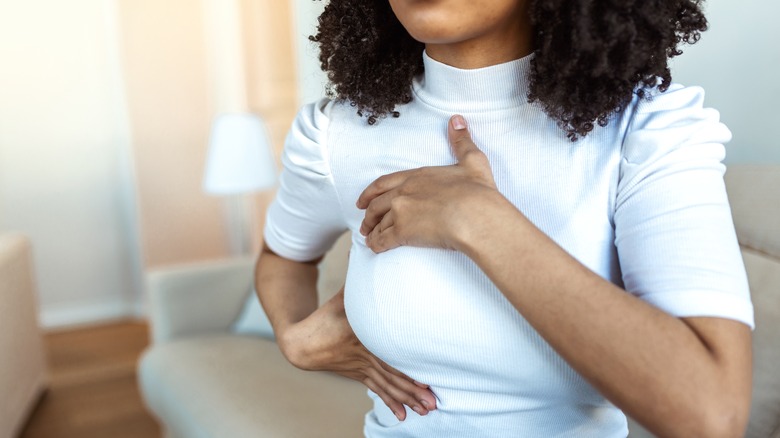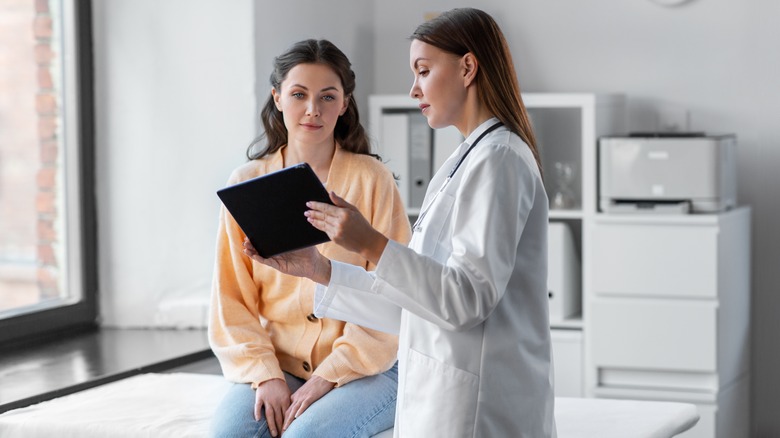What's The Deal With Fibrocystic Breasts, And Do They Require Treatment?
Going to the doctor isn't typically fun, but keeping up with regularly scheduled check-ups is important for staying healthy. While some people don't like being poked and prodded, the fear of what they may find out on a routine exam can be nerve-wracking for many. Yet the annual gynecological exam and pap smear are vital for your well-being.
Besides a pap smear and vaginal exam, an annual gyn visit also includes a breast exam. Depending on your age or office findings (such as a lump), you may be sent for a mammogram. Your healthcare practitioner may also instruct you on how to do monthly manual breast exams.
Not all breasts are the same. They naturally come in various shapes and sizes, but are also composed of slightly different tissue from person to person. If you're told you have fibrocystic breasts, you may feel confused as to what that exactly is and begin to worry. But they are more common than you may think.
Fibrocystic breasts are not harmful
An official diagnosis of fibrocystic breasts can only be officially confirmed with a mammogram or sonogram, though a doctor may suspect it from an exam. If your doctor has found that you have fibrocystic breasts, the first thing you should know is that this is not a disease, according to Mayo Clinic. In years past, it was called fibrocystic breast disease, but the name has changed because these findings are relatively harmless.
Fibrocystic breast changes can occur at different times in life and are most common during the childbearing years between ages 30 and 50. These breasts may feel lumpy, cordlike, or nodular when palpated.
Sometimes, fibrocystic breasts can cause symptoms that are especially noticed during the last half of the menstrual period when PMS sets in. Symptoms include tenderness, pain, and discomfort. It's typically centered on the outer top of the breasts. They may feel swollen and very tender from ovulation through your period. However, not all people with fibrocystic breasts notice any symptoms.
Easing symptoms from fibrocystic breasts
Typically fibrocystic breast changes don't require treatment, since many cases are mild. However, if you experience regular breast tenderness and pain from fibrocystic breasts, there are some things you can do to get relief.
One of the most important and relatively easy things to do when you are having pain from fibrocystic breasts is to wear a very supportive bra (via MedicalNews Today). This will keep movement to a minimum and also protect tender tissue. In addition, a warm compress or hot water bottle can help soothe tenderness.
If pain worsens, non-inflammatory medication, such as ibuprofen or acetaminophen, as well as hormonal birth control, can sometimes help. For long-term relief, cutting down on caffeine is thought to ease symptoms. Additionally, getting some movement in, such as walking, yoga, or tai chi is useful, as is practicing relaxation techniques like meditation and progressive muscle relaxation.


